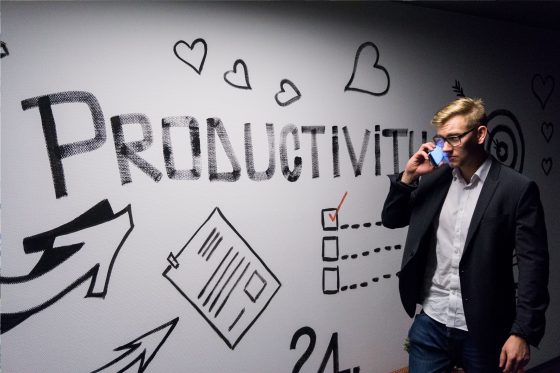
Just because you’re at work certainly doesn’t mean you are productive. How productive you are is dependent on how you spend your time and if you are focusing on your critical tasks or being distracted by those that aren’t. One of the most prominent activities we can get very caught up in, consider are more important than they actually are and waste a significant amount of time on is meetings.
How much time do you spend in meetings? And would you rate the meetings you attend as effective?
Meetings can be a very resourceful way of collaborating, working on strategy, defining goals, measuring progress and sharing information and ideas. They can also be a great way of building relationships and ensuring people have clarity on expectations and clear on their actions. A good meeting can be very motivating and empowering if the meeting has purpose and facilitated well.
However, how many times have you walked into a meeting where most participants are late, sit there looking at their mobile phones, there’s idle chatter for the first 15 minutes and you are wondering what the meeting is about? This is one of my biggest issues in business – if you are going to ask for someone’s time, respect it. And respect it by:
- Clearly outlining the purpose of the meeting
- Providing an agenda prior to the meeting
- Being clear on what the proposed outcome of the meeting is
- Being prepared
- Start and finish on time
- Use only the time you need.
It seems the common belief in our business world is a meeting must go for an hour. This isn’t the case. Some do need longer time than others, but if you’re prepared and have set the expectation for the participants that they are also prepared, you could get through the meeting in 15 minutes, or 30 minutes, saving everyone time.
In a study by Bain and Company, it was found that on average, Senior Executives are spending two full days in meetings a week and 15% of an organizations collective time is spent in meetings. That is a huge time investment and you would want to be getting a good return on that time investment because the cost of those meetings if you consider salaries is enormous! In fact, across the US it has been reported that unnecessary meetings cost $25 million per day.
A meeting for meetings sake, which often happens, is not only waste of time, it’s boring, it’s demotivating and it can add an unnecessary level of overwhelm to the people involved. People are employed to get stuff done and when they are wasting their time in meetings, frustration levels rise as does resentment when they have to burn the midnight oil to actually do stuff thank to so much precious time during the day wasted on meetings.
One of the biggest issues in business now is time. Time is a scarcity so how we spend it is important. So when you are thinking of calling a meeting, please ask yourself these questions:
- What is the purpose of the meeting?
- What is the outcome I am seeing?
- Who needs to be involved?
- What do I want from them as a result of participating in the meeting?
- What is the timeframe I need?
Then:
- Ensure an agenda is prepared,
- Preparation points highlighted and that you are prepared and then facilitate it well and engage with your audience.
- Establish the expectations for the meeting and set the tone. Importantly, finish the meeting with clear actions that need to be taken as a result of the meeting and who is responsible for what. If no action is being taken as a result of the meeting, or nothing changes, you are wasting your time. There is nothing more frustrating then returning to meeting after meeting and discussing the same things.
- This also needs to be followed up in writing – nothing fancy, just key bullet points that will enable you to keep people accountable for what they shoudl be doing.
By following the above you will be well on your way to having an effective meeting.
Perhaps one way to eliminate these unnecessary meetings is to have the cost of meetings included on an expense line of the P&L – and then monitor it. I’m betting it will be a very different mindset across the board in organizations when the real cost is displayed and becomes a KPI! Then people will certainly think twice about whether they really need to have a meeting and if things could be done a better way.
